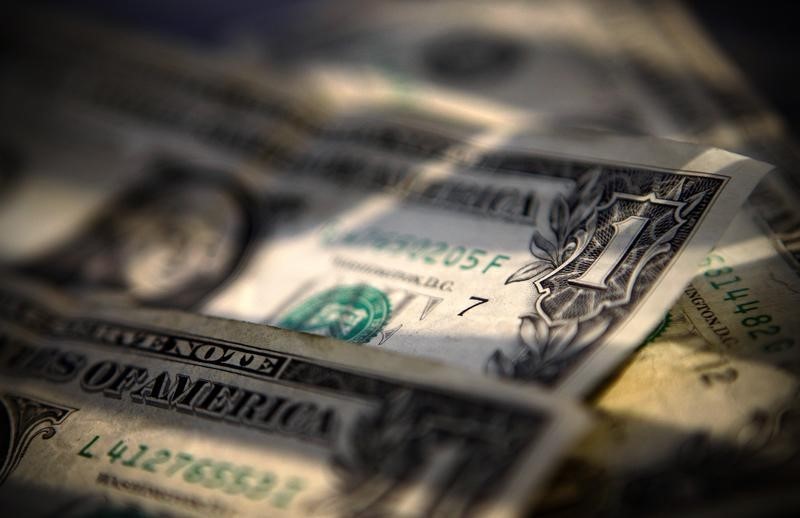 © Reuters.
© Reuters.
By Gina Lee
Investing.com – The dollar was down on Thursday morning in Asia. It ended 2020 on a down note over bets that a global economic recovery in 2021 will pull money into riskier assets, even as the growing U.S. ‘twin deficits’ of a huge budget increase and trade deficits argue for an ever-cheaper greenback.
The U.S. Dollar Index that tracks the greenback against a basket of other currencies inched down 0.06% to 89.498 by 8:54 PM ET (1:54 AM GMT). The dollar saw its lowest level since April 2018 and is down 7.2% on the year.
Hopes that 2021 will be better than 2020 have led to a retreat from the safe-haven dollar, with investors increasingly turning to the more attractive riskier assets, particularly in emerging markets. Bears have also been resurrecting the ‘twin deficits’ excuse to short the dollar, with the deficits meaning that more dollars are being printed and moved overseas.
The U.S. stimulus bill, passed by the House of Representatives and the Senate during the past week, also will be negative for the dollar as U.S. debt balloons and President-elect Joe Biden promises even more measures when his administration takes office in January.
Also dampening sentiment for the dollar is the U.S. trade account. The account has been bleeding dollars as the deficit on goods hit a record $84.8 billion in November, with imports soaring past pre-COVID-19 levels. The current account deficit also saw a 12-year high in the third quarter, with a large shortfall in net financial transactions as Americans borrowed more from abroad.
“The U.S. dependence on foreign savings is increasing and at 3.4% of GDP, it is approaching a danger zone where it will become increasingly difficult to attract savings without further dollar weakness, or higher interest rates,” Deutsche global head of G10 FX Alan Ruskin warned in a note.
“The deterioration in the ‘twin deficits’ will do nothing to improve dollar sentiment, even if it does not as yet justify extreme dollar undershooting either,” the note added.
Across the Atlantic, the European Union (EU) is ending 2020 with a huge current account surplus, thanks in large part to Germany. The surplus means that there is a natural inflow to euros through trade, and the euro is at $1.2305, after seeing its highest since April 2018 with a gain of almost 10% for the year. Bulls are looking to see if the euro will hit $1.2413 and $1.2476, two stops on the way to 2018’s peak of $1.2555.
The USD/JPY pair inched down 0.06% to 103.10. Japanese markets are closed ahead of the new year.
The AUD/USD pair was up 0.31% to 0.7708 and the NZD/USD pair gained 0.37% to 0.7230.
The USD/CNY pair inched down 0.03% to 6.5191. Data released earlier in the day in China showed December’s manufacturing Purchasing Managers Index (PMI) at 51.9, down from the reading of 52 in forecasts prepared by Investing.com and November’s 52.1 figure. The data also showed December’s non-manufacturing PMI at 55.7, also down from November’s reading of 56.4.
The GBP/USD pair edged up 0.16% to 1.3643, levels that have not been seen since May 2018. The pound was boosted by the post-Brexit trade deal struck between the U.K. and the EU becoming law after the Queen gave her approval earlier in the day. The House of Lords gave the bill to approve the deal an unopposed third reading late on Wednesday, after MPs had voted it through by 521 votes to 73.
Leave a comment
